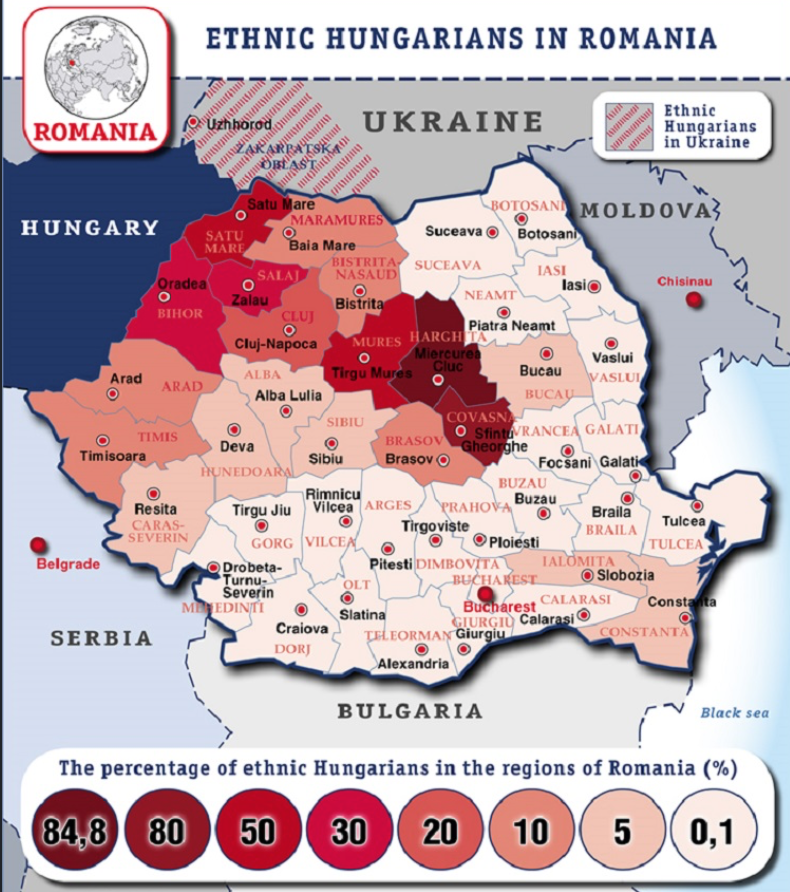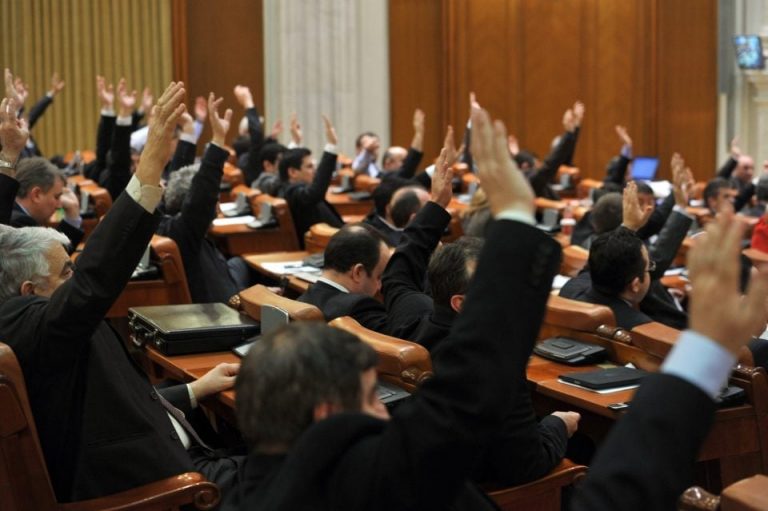Budapest keeps using the Greater Hungary idea, – Prime Minister Victor Orban’s dream. After being elected to office, Viktor Orban started to push neighboring countries where ethnic Hungarians live, targeting to create national autonomies. The Jobbik Party, the Prime Minister leans for support on, is coming out flat for the Greater Hungary revival.
On April 28, the Romanian parliament supported autonomy for 1.5 million Hungarians living densely in Transylvania (the so-called Szekely Land) in tacit consent.
However, the very next day, on April 29, the Senate declined the autonomy for the Szekely Land.
126 out of 135 senators present voted against the autonomy bill. At the same time, just representatives of the Democratic Alliance of Hungarians in Romania endorsed the initiative.
The document envisioned an autonomous region comprising parts of Northern Transylvania – Harghita and Covasna counties and the city of Mures. The autonomy was due to have its own president, elected by those living in the region.

The Democratic Union of Hungarians that drafted the bill assumed that people who know the language of national minorities and belong to them would be assigned as local and regional government.
The Romanian government opposed the passage of this bill. The Chamber of Deputies’ special committees did not support it either. The administrative commission members claimed the draft violated the Constitution, stipulating that Romania is a national, sovereign and independent, unitary and indivisible state.
The Lower Chamber’s decision opened the potential for Budapest to strengthen its influence on Romania and turn the tables to push other national governments in the countries where ethnic Hungarians live densely to create autonomies.
The risks of legitimate Hungarian enclaves in Romania, with the actual loss of control over Bucharest’s influence on educational and cultural development in these areas, have been a key argument against the Senate’s support for this decision. Orban plays a long-term game. The primary task is to make Hungarian an official language including the right to use it at public institutions in a particular country on the legislative basis. At the same time, Budapest is lobbying for the right of communities to use Hungarian symbols freely.
Such initiatives are properly targeting to encourage the mono-ethnic population forming in the parts of foreign countries bordering Hungary. In the long run, Budapest believes such steps would enable to claim the integration of national autonomies and, as a result, the revival of Greater Hungary.
Similar Budapest initiatives have been announced as for Ukraine, where an attempt to avoid losing control of the western border regions with 200-thousand Hungarian population led to Hungary blocking the Ukraine-NATO negotiation process.
Romania’s Senate blocking the Szekely Land autonomy will prompt to Hungary’s attempts to reconsider Bucharest’s decision. Hungary is unlikely to be effectively tough on Romania through European political institutions over Viktor Orban’s weak position in the European Union as his policy of infringing on freedom of speech and moving away from democratic standards is criticized.
Therefore, there’s a strong possibility that Orban and the right-wing Hungarian political actors would attempt to sabotage stability in the areas of Szekely Land. In March 2018, rallies for the Szekely Land autonomy already took place in the Romanian city of Targu-Mures. More than 3 thousand people in all took part in the rally. Protesters opposed the suppression of their right to self-determination by Bucharest. Consequently, the Romanian Senate’s decision activates the protest movement under the direct control of the Hungarian government in Szekely region. Such subversions might be backed by Russia, highly engaged in supporting the Hungarian separatists in Romania in 2014. Taking into account the close cooperation and Kremlin’s support for the government of Viktor Orban, the situation in the Szekely region is an opportunity for Moscow to undermine stability in Europe, strengthen centrifugal processes in the EU countries and stir up disunity into the NATO decision-making system. Such scenario seems highly probable, especially amid Belgian counterintelligence information on Moscow’s support for the Knights of Flanders separatist movement. Thus, in the midst of a crisis caused by the pandemic and economic downturn, one should expect increased activity of separatist movements in the European countries. Considering the existing political structures, experience, vision and agenda, the situation in the Szekely Land might obviously become radicalized in the short run if Bucharest does not succeed in blocking or preventing the active Russia’s involvement in the regional developments and the implementation of irregular conflict scenarios.
Ethnic Hungarian minorities in Romania are often used as a political issue by the governments in both Hungary and Romania. Hostility to the Treaty of Trianon is at the foundation of Hungarian nationalism, which calls for the restitution of the territories that were lost after World War I.
The Hungarian government is hoping to attract the votes of ethnic Hungarians living in Romania, some of whom are now legally allowed to vote in Hungarian elections.
Half the Hungarians living in Romania are Szekelys, a Hungarian-speaking subgroup living mostly in what is known as the Szekely Land, an ethno-cultural region in eastern Transylvania.
From the Middle Ages through the mid-19th century, the region enjoyed varying degrees of autonomy, until the Austro-Hungarian Compromise of 1867 and several administrative reforms in the 1870s abolished all the autonomous areas in the Kingdom of Hungary, including Szekely Land.
After World War II, the Romanian government created a Hungarian Autonomous Region in the Szekely Land, which existed from 1952 until 1968 when the Communist government reformed the administrative divisions of the country to eliminate any identification of regions by ethnic or cultural divisions.
Following the fall of Communism, Romania’s subsequent democratic governments preserved the administrative division of the country, which led to the creation of several initiatives by ethnic Hungarians who wanted to re-establish autonomy.
The Szekely region is one of the poorest in Romania, making it particularly susceptible to political manipulation, from Hungarian politicians.




